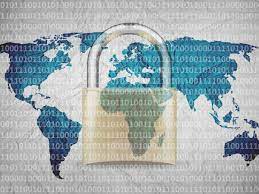According to the NCSI index, the country’s score is 70.13.
Latin America has many challenges ahead. One of them is cybersecurity, which permeates all sectors, from tourism to the banking and financial system. The International Criminal Police Organization (Interpol), states that the region is facing more cybercrime attacks.
In the first half of 2020 alone, Latin America registered the highest rates of cyber-attacks in the world, with almost three times more incidents through mobile browsers than the global average. Given this reality, cybersecurity plays a fundamental role.
In this regard, according to the National Cyber Security Index (NCSI), developed by e-Governance Academy, the Dominican Republic, although lacking an outstanding digital development, has the highest score in the region, reaching 70.13.
In fact, it is positioned in the top 30 worldwide, tied with Canada (70.13) and surpassing other nations such as the USA (64.94). However, in terms of digital development, both double the Caribbean nation, which has a score of 45.41, while the North American countries, 75.96 and 81.05, respectively.
USA (64.94). However, in terms of digital development, both double the Caribbean nation, which has a score of 45.41, while the North American countries, 75.96 and 81.05, respectively.
Latin America
This is how cybersecurity is now an issue that continuously acquires relevance at all levels and sectors, ESET Latin America’s IT Security specialist Miguel Angel Mendoza explains to elDinero. “Latin America is no exception, there is a greater interest in the subject, where governments, companies and users are increasingly concerned and concerned about their digital security.”
For its rating, the e-Governance Academy takes into account a series of guidelines such as the development of cybersecurity policies. In this section, the Dominican Republic, Paraguay, Chile and Ecuador have all the necessary parameters.
Likewise, the Caribbean country, together with Uruguay, are the only ones with the required standard in terms of analysis and information on cyber threats. While the former has a National Cybersecurity Observatory (Ciberobservatorio), the latter has a Cybersecurity Operations Center Division (SOC).
Other parameters taken into account in its ranking are education and professional development, where none of the countries in the region met all the requirements, including cybersecurity competencies in primary education. In this section, only Argentina and Panama have enactments.
However, the Dominican Republic had the highest score in contribution to global cybersecurity. It is part of the Convention on Cybercrime, The National CSIRT was admitted as a full member of FIRST in 2020, and is the only country in the region to host a regional or international cybersecurity organization: the Latin American and Caribbean Cyber Competence Center.
The NCSI measures more than two dozen factors for its ranking, among which the protection of digital and essential services is also cited. They also include trust services and electronic identification, which influences electronic signatures.
They also analyze the protection of personal data, incident and crisis management, and their responses. In this section, no country had the necessary requirements. In fact, it argues that governments lack a crisis management plan for large-scale cyber incidents.
The fight against cybercrime was taken into account, analyzing its typification. Only Uruguay and Haiti do not have such a plan. The latter does not have a cybercrime unit either, while the rest of the region does.
Regulation
In 2018 the Dominican Republic announced its cybersecurity strategy under Decree 230-18, which establishes and regulates the National Cybersecurity Strategy. The mission is to implement appropriate cybersecurity mechanisms for the protection of the State, its inhabitants and, more generally, national security.
It is framed within the Digital Republic Program created through Decree 258-16. It has four general objectives, 13 specific objectives, and 37 lines of action contained in the four pillars: 1) Legal framework and institutional strengthening; 2) Protection of national critical infrastructure and government IT infrastructure; 3) Education and national cybersecurity culture; and 4) National and international alliances.
Source: Eldinero.com.do
Learn more: TECHNOLOGY

